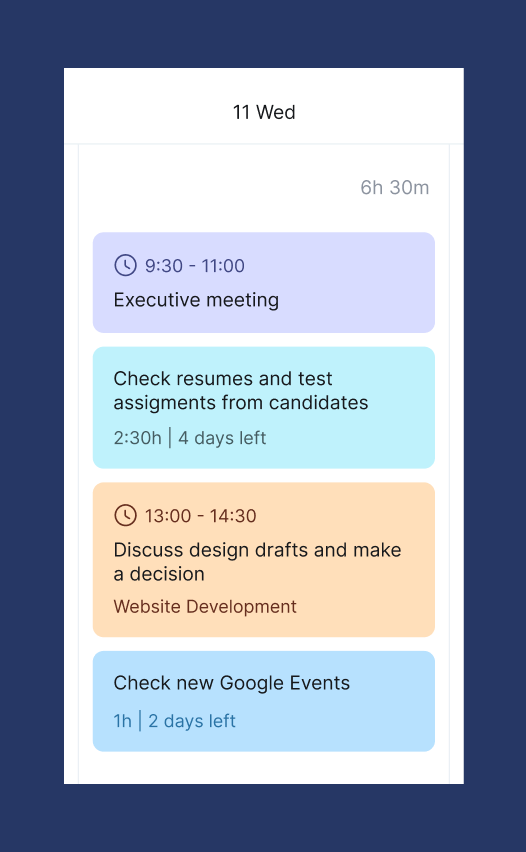You have probably encountered constraints if you have ever worked on complex projects. Project managers must work within certain project constraints, which they must carefully analyze and manage throughout the project. Every limitation has a purpose, and for a project to be completed successfully, it is essential to comprehend how they interact. When these limitations are managed well, projects are completed on schedule, and goals are accomplished within predetermined spending and quality standards. How are these limitations handled?
Three time constraints meaning
Any project encounters three significant limitations: scope, budget, and time. These elements specify the parameters that govern your actions and demand particular consideration. The project is limited by time due to resource availability, deadlines, and internal time constraints. For instance, the team might not have enough time to do the assignment at the necessary standard if the deadlines are too close. Budgetary constraints are linked to costs: ineffective cost control can result in overspending and losses. The actions and objectives that must be completed comprise the project’s scope. Resources and time will be needed in proportion to the number of tasks.
It is clear how these limits relate to one another: implementing activities with a more extensive scope will take more time and money. Thus, the secret to successfully carrying out any project is to balance scope management, cost, and time. Since time cannot be added to or taken away, unlike money or objectives, it is frequently the most challenging component to manage.
10 Expert tips for time constraints
This part includes the 10 most crucial time management recommendations and is the most valuable and doable. You’ll provide project managers with the following brief, unambiguous strategies:
1. Set realistic deadlines with stakeholders
Reliability in deadline setting is one of the most critical aspects of project management. Your project’s deadlines are essential for setting clear expectations and maintaining team concentration. Unrealistic timelines frequently result in hurried work, fatigue, and subpar outputs. Including stakeholders in the deadline-setting process guarantees that all parties agree and that the deadlines accurately represent the project’s complexity and your team’s capabilities.
Setting deadlines is simplified with Bordio’s daily task planner, which facilitates the creation of realistic timetables for assignments and projects. You may establish timers and designate precise deadlines for each activity to guarantee responsibility. Additionally, Bordio provides the option to view all tasks and their associated deadlines in a single calendar view, which aids teams in staying focused on critical work rather than becoming bogged down by lengthy to-do lists. Bordio is unique among time management software since it strongly focuses on daily, active scheduling. Teams may allocate tasks to certain days with Bordio, which helps them focus solely on what is essential for that day rather than listing all the chores simultaneously. This strategy discourages task overload and promotes a more organized, controllable way of finishing assignments.
For instance, if your team works on a big project with several phases, you may divide each into manageable daily tasks and assign specific due dates. This method simplifies progress tracking and allows for easy adjustments when certain activities or stages take longer than anticipated. Moreover, team members may stay on task without continuously reviewing or modifying their schedules thanks to integrated timers and reminders.
2. Create and map a project timeline
Throughout the project, maintaining organization and clarity requires creating a project timetable. Effectively plotting all significant milestones, job dependencies, and deadlines may be done using tools such as Gantt charts, which visually represent the project from start to completion. An online organizer is crucial for mapping out project timelines and keeping track of key deadlines and milestones, allowing the team to remain organized and responsive to changes.
The visible timeline makes improved planning and resource allocation possible. Over time, unforeseen difficulties or setbacks may occur. When this occurs, the timeline becomes useful for rapidly determining where changes may be made without delaying the project’s completion date. You may swiftly change deadlines or reallocate resources by outlining tasks and their dependencies. This will help you absorb any delays and keep the project moving forward. A crucial procedure for guaranteeing flexibility and adaptability is regularly updating and examining the project timetable.
3. Manage team availability and balance workloads
Project managers must balance team responsibilities and availability effectively to prevent delays and stay on schedule. Overworked team members might become less productive, resulting in missed deadlines and subpar work. Project managers may allocate workloads more fairly by considering each team member’s ability for both tasks and meetings. This keeps people from burning out and guarantees that work is done on schedule without compromising quality.
Bordio aims to provide a clear picture of your team’s capacity by keeping track of all planned events, including meetings and tasks. Using a comprehensive approach to job distribution, no team member is overworked while others have time for other responsibilities.
4. Assign time constraints to each task
Establishing time limits for every work is crucial for sustaining concentration and guaranteeing efficiency. Setting a deadline for a task’s completion instills a feeling of urgency that helps team members focus on their duties. Time limitations also make it easy to monitor how each activity is doing and determine whether any more resources or involvement is needed if anything is taking longer than anticipated.
This method allows for better overall control of project timeframes. When each activity has a fixed time, estimating the fulfillment of significant project milestones and making appropriate plan adjustments is simpler. During team check-ins, time limits also act as a point of reference to ensure everyone is on board with the project’s timeline and prepared to handle any delays. We suggest using a task tracker, which can help by assigning time limits to individual tasks, ensuring that each one is completed within the required timeframe and contributing to overall project progress.
5. Monitor task progress and adjust as needed
It is essential to regularly oversee the advancement of tasks to guarantee that projects remain within budget and on schedule. It enables project managers to see possible delays early on and make changes before they become more serious problems. By providing tools for assigning, reassigning, and tracking jobs with configurable statuses, Bordio task planner streamlines this process. This provides complete visibility into each task’s current status, indicating whether it is ongoing, finished, or running behind schedule. Managers with a good grasp of how work progresses can swiftly address issues requiring more attention or resources.
Job management is further improved with Bordio’s integrated live chat function, which allows for real-time discussion inside each job. As a result, team members may ask questions, discuss progress, and make required changes, all without ever leaving the platform. The in-task chat feature ensures that everyone knows task updates and that any required adjustments are handled promptly, including altering priorities, reallocating tasks, or amending task information. By keeping things flowing smoothly, this dynamic strategy lowers the likelihood of bottlenecks and misunderstandings.
6. Analyze tracked time for future improvements
Monitoring task completion time yields insightful information that can significantly enhance project planning and execution in the future. By comparing early estimates with accurate data and knowing how long specific activities take to accomplish, project managers may make more accurate time estimates for upcoming projects. This procedure ensures that teams are neither too nor under-committed by optimizing resource allocation and improving project timeframes.
Tip: Consider reading “Workload Management Strategies” article for more insights on managing workloads effectively!
Teams may use this data to pinpoint inefficiencies, such as jobs that take longer than anticipated, and make necessary improvements to enhance performance in future projects. Using prior data to estimate the duration of comparable jobs in future projects also makes better forecasting and planning possible. You can use a work task tracker to monitor task completion time.
7. Work in short iterations (Agile approach)
Teams that use an Agile methodology and short iterations can be adaptable and change-responsive. Agile strongly emphasizes segmenting projects into more miniature, more manageable stages, known as sprints, when specified objectives are established and completed in a set amount of time. Teams may use this approach to quickly make necessary modifications, evaluate progress regularly, and deal with problems before they become serious. By concentrating on smaller tasks or milestones inside each iteration, teams can avoid feeling overwhelmed by the more significant project scope and retain momentum throughout the project lifecycle.
Brief iterations also encourage continuous improvement. Teams may assess what went well and poorly after each sprint and use the input to improve their procedures moving forward. This frequent cycle of review and modification keeps the team in line with project objectives and allows for the incorporation of new data and evolving requirements. In the end, short iterations enable teams to work quickly without sacrificing their high degree of flexibility or timetable compliance.
8. Stay flexible for unforeseen delays
The secret to lessening the effects of these setbacks is to be flexible and prepared to change plans at any time. With minimal disruptions, a flexible project manager can swiftly determine the underlying reason for the delay and implement measures to bring the project back on schedule.
Rearranging work, reallocating resources, or adjusting priorities might be necessary to overcome the delay. Regular communication with stakeholders and team members is crucial during these times because everyone needs to know what adjustments are needed and how the project plan has been modified.
9. Delegate tasks to optimize team productivity
Delegation is crucial for any project manager looking to maximize team productivity and streamline project execution. Distributing responsibilities among the project team using a team project planner ensures that workloads are manageable and balanced. Transparent decision-making processes should be established to ensure that each team member understands their role and can focus on their assigned tasks without confusion.
When the appropriate individuals are allocated to the appropriate duties, projects proceed more quickly and efficiently with fewer delays and bottlenecks. Additionally, delegation frees up the project manager’s time so that they may concentrate on more significant decisions and problem-solving techniques rather than being mired down in minute details. Maintaining this balance and ensuring that workloads are manageable requires routinely assessing team progress and modifying job assignments.
10. Learn to say “No” to avoid overloading your project
One of the most essential time management skills is learning to say “no.” It’s easy to overwhelm the project schedule with additional tasks or requests that distract from the core goals. Use technologies like Bordio’s project planning calendar to prioritize the most critical jobs and weed out the less crucial ones. While it can be tempting to accept every new task, this often leads to resource overloading and delayed project progress.
Attention to your project’s main objectives is crucial. Use technologies like Bordio’s task management system to prioritize the most critical jobs and weed out the less crucial ones. If you keep your team focused on the project’s main goals and away from unneeded distractions, they will focus their time and energy on tasks that advance it.
Other project management constraints
Project managers have traditionally addressed the three main limitations: scope, money, and time. Recent project management literature has broadened this perspective, acknowledging that projects are subject to various internal and external time constraints as well as other limitations. These days, time, cost, scope, quality, risk, and all the resources are the six main limitations frequently seen as essential to project management. To guarantee project success, project managers need to strike a balance between these criteria.
These six limitations are connected and can be paired. Time and project costs are related since delays frequently result in higher costs. Quality and scope constraints are related in that if a project’s scope is not appropriately controlled, it may occasionally jeopardize its overall quality. Lastly, risk and resources are crucial because the former affect risk management tactics, and the latter determines how likely they are to succeed. Effective project management requires an understanding of these interrelated limitations and the ability to balance them.
The importance of time constraint
Time is crucial for the success of project management. Recognizing its value is necessary for a project to be successful. Here are some key points highlighting the significance of time constraints:
Imposition of deadlines: Projects must follow specific deadlines set by internal and external time constraints. Journey milestones established by deadlines help the team move forward while supporting project schedules and tracking.
Limited working hours: The project team works within limited working hours. To fulfill project targets, teams must prioritize time management while considering their availability and the project progresses.
Need for structure: Without clear time limits, projects may quickly become unmanageable. With timelines in place, teams must function within a system that guarantees proper task prioritization, efficiency, and effective decision making.
Difficulty in adjustments: While project costs and scope constraints can be adjusted, time management remains a more difficult challenge. Adjusting timelines can impact the entire project schedule and cause ripple effects across the project.
Impact of missing deadlines: Failing to meet deadlines can jeopardize the entire project’s success. Delays lead to missed opportunities and can upset project stakeholders, as well as increase costs and strain all the resources.
Focus on planning and timelines: Recognizing the difficulties in managing time requires a strong emphasis on upfront planning and adherence to project schedules from the project launch. Ultimately, prioritizing time management ensures a smoother project execution.
Tip: For more on optimizing project timelines, consider articles like “Project Management Checklist: Key Points” and “Critical Path Method In Project Management”.
Final Thoughts on Time Constraints
Time constraints are a fundamental aspect of project management that significantly influence the planning and execution of any project. Recognizing the limitations imposed by time is crucial for project managers aiming to deliver successful outcomes. As the only resource that cannot be replenished, time must be carefully managed to ensure that projects remain on schedule and within scope.
Navigating time constraints requires strategic decision making, including setting realistic deadlines, balancing workloads, and remaining adaptable to unforeseen challenges. Project managers can track and optimize team productivity by clearly delegating tasks to the project team and focusing on core objectives. Tools and methodologies like Agile can also help teams stay flexible and responsive to changes.
Mastering time management is key to timely project delivery and overall project success. Project managers can optimize team productivity by using online project planners to delegate tasks and focus on core objectives.








